In the bustling rhythm of modern life, finding time to nurture a garden might seem like a distant dream. Yet, whether you’re a seasoned gardener or a green-thumbed novice, cultivating a bit of greenery at home can be both manageable and deeply rewarding. The secret lies in selecting the right plants—those that thrive with minimal attention and still bring a touch of nature’s magic into your space. With the right choices, even the busiest among us can enjoy the beauty and calm that plants offer.
This article is your gateway to discovering a selection of resilient, easy-care plants that fit seamlessly into hectic schedules. You’ll learn about plants that require minimal watering, thrive in various lighting conditions, and need little more than the occasional glance to flourish. By the end, you’ll have a list of plant allies ready to transform your home into a personal oasis, without the pressure of constant maintenance. So, let’s dive into the world of low-maintenance flora and bring a bit of effortless nature into every nook and cranny of your life.
Top Low-Maintenance Indoor Plants
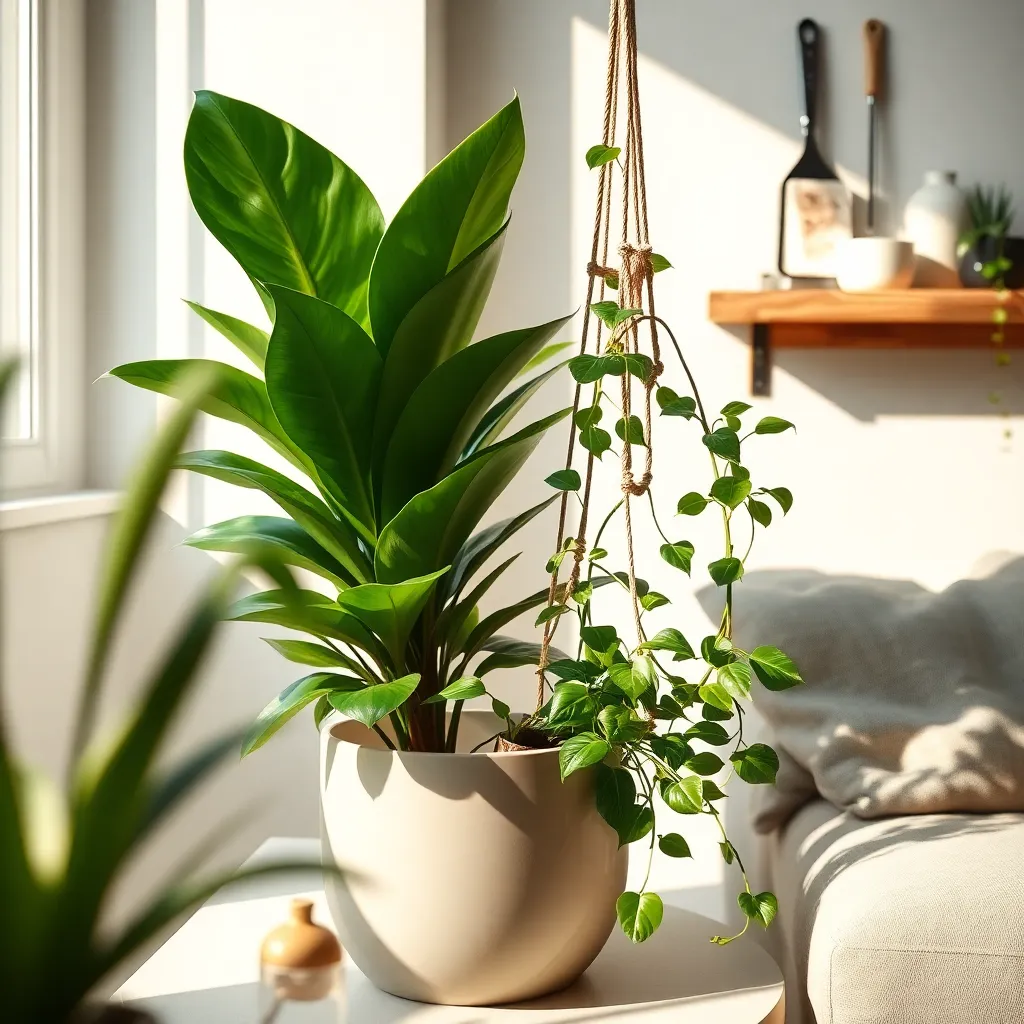
For those seeking low-maintenance indoor plants, the Snake Plant is an excellent choice. Known for its resilience, it thrives in a variety of light conditions and only needs watering every two to three weeks, making it ideal for busy individuals.
Next on the list is the ZZ Plant, which is practically indestructible and perfect for beginners. Its thick, waxy leaves store water, meaning it’s quite drought-tolerant and can be watered just once a month.
The Pothos plant is another standout for low-maintenance care, growing well in both bright indirect light and low-light spaces. It benefits from watering every one to two weeks, allowing the soil to dry out between waterings to prevent root rot.
Additionally, these plants adapt well to a range of temperatures, typically thriving in normal indoor climates. For a successful growing experience, ensure you’re using a well-draining potting mix to prevent water from sitting at the roots, which can foster mold or rot.
Simple Outdoor Plant Choices
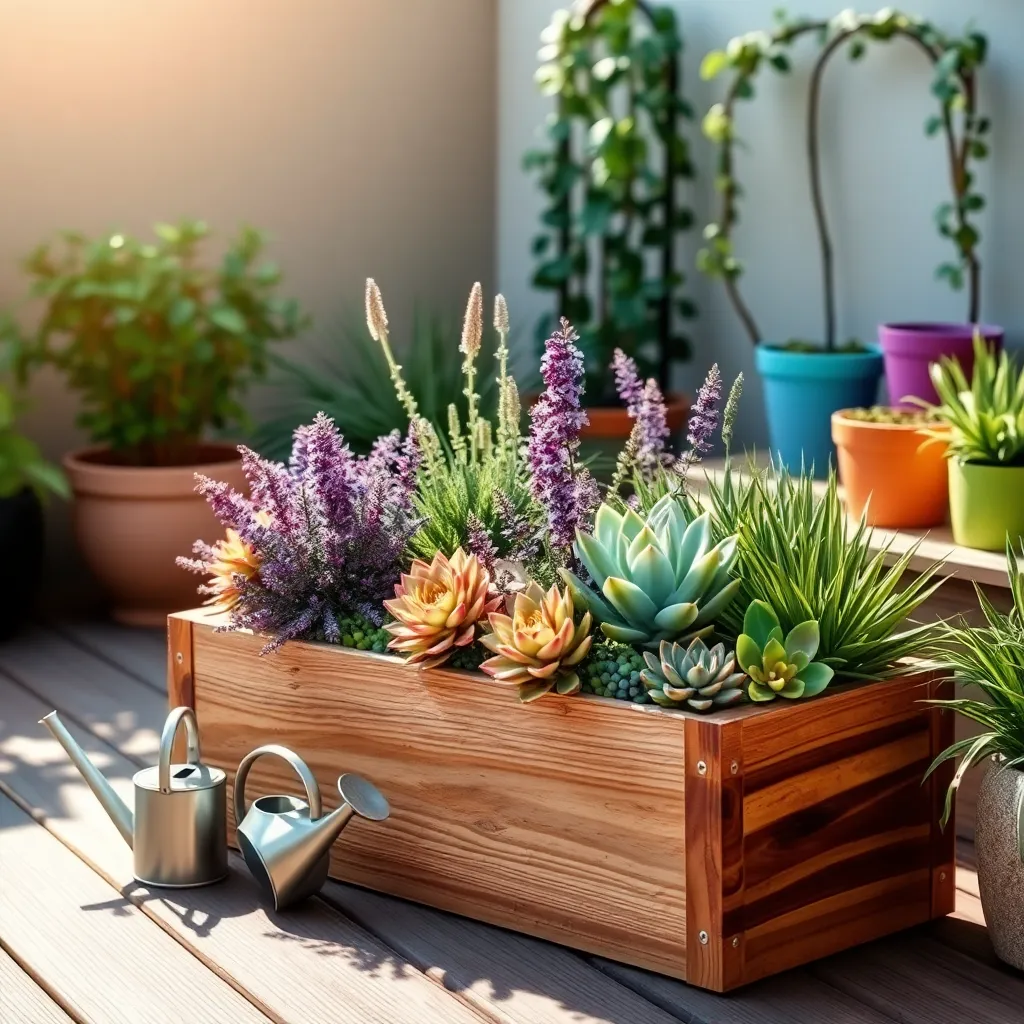
Choosing the right plants for your outdoor space can make gardening a breeze, even for those with hectic schedules. Perennials are an excellent choice, as they return year after year with minimal effort from you.
Lavender is a fantastic low-maintenance option, thriving in well-drained soil and full sunlight. Water it deeply but infrequently, allowing the soil to dry out between waterings, to keep it healthy and vibrant.
Another great option is sedum, a resilient succulent that handles drought conditions exceptionally well. Plant sedum in sandy or rocky soil to ensure proper drainage, and enjoy its colorful blooms with minimal watering needs.
For those seeking a touch of green without much fuss, consider planting fescue grass. This hardy grass variety requires less mowing and watering than traditional lawns, making it perfect for busy gardeners.
Minimal Watering Plant Options
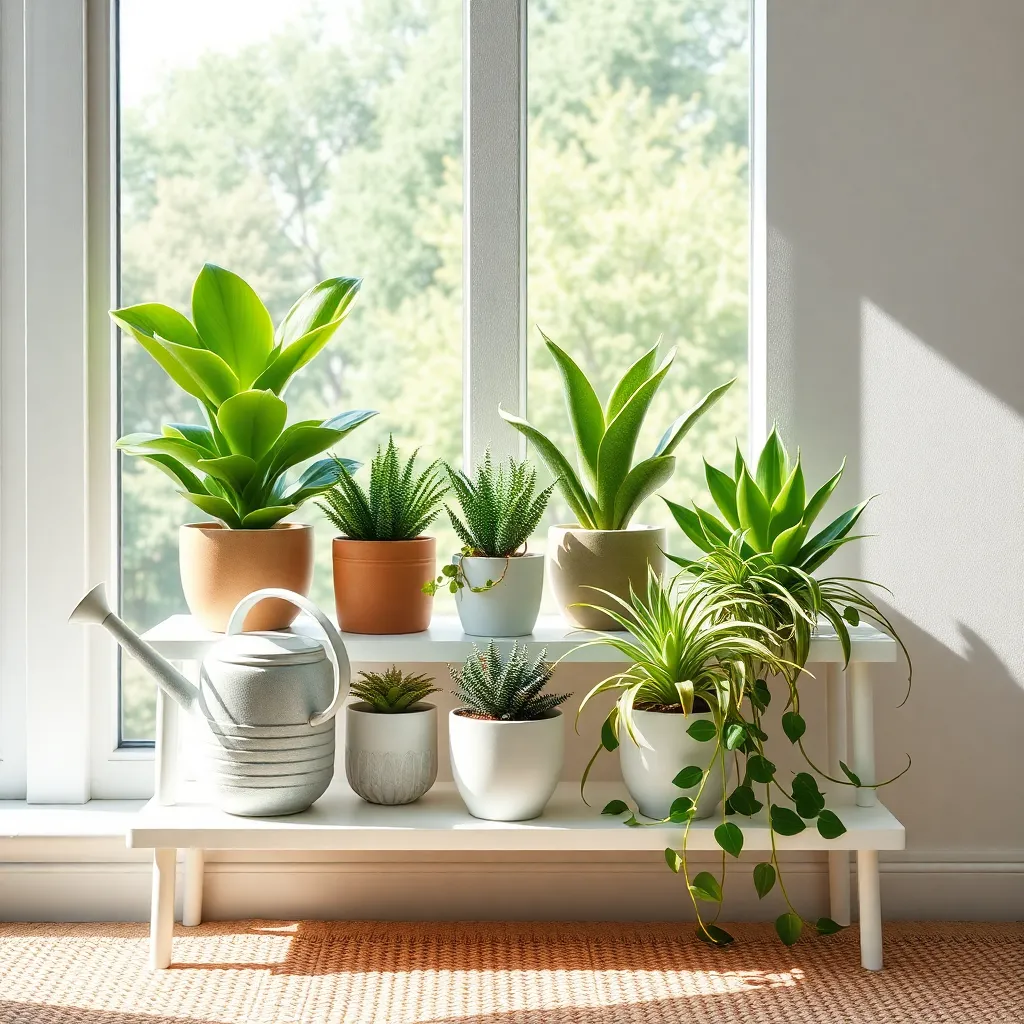
For those with busy schedules, selecting plants that require minimal watering can make gardening more manageable. Succulents are an excellent choice as they are adapted to dry climates and can thrive on infrequent watering. They prefer well-draining soil like a cactus mix, which prevents root rot from excess moisture.
Another great option for a low-maintenance garden is the lavender plant, which is both drought-tolerant and thrives in sunny locations. Ensure it is planted in sandy or rocky soil to mimic its native Mediterranean environment, promoting healthy growth.
Consider incorporating sedums, which are hardy and adaptable to various conditions, flourishing with minimal care. They come in a variety of colors and forms, providing aesthetic diversity while requiring little attention beyond occasional watering.
For advanced gardeners, experimenting with xeriscaping techniques can optimize water efficiency further. This method involves grouping plants with similar watering needs together, using mulch to conserve moisture, and selecting native plants adapted to the local climate. By doing so, you can create a sustainable garden that thrives with minimal intervention.
Sunlight Needs for Busy Gardeners
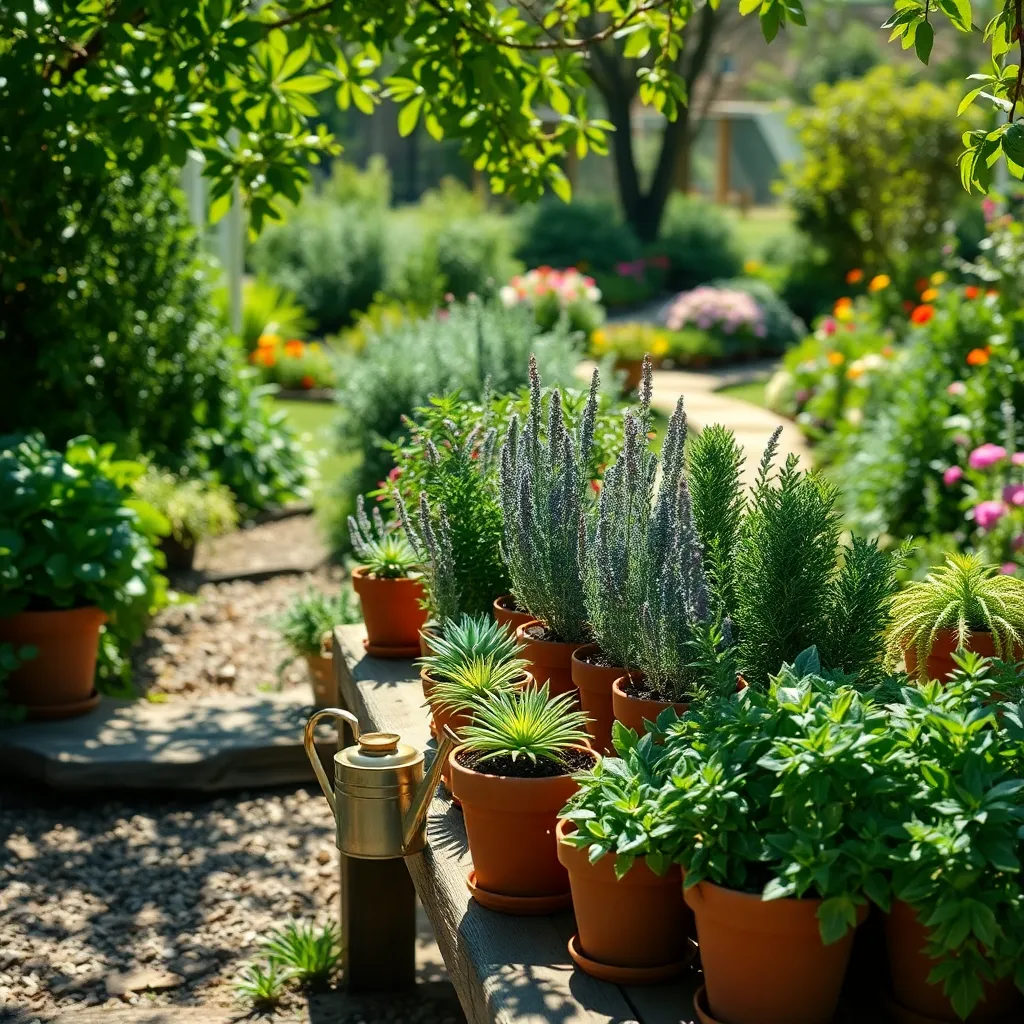
Understanding the sunlight needs of your plants is crucial, especially for busy gardeners who want to maximize their plant’s growth with minimal effort. Most easy-to-care plants prefer indirect sunlight, making them ideal for indoor settings or shaded outdoor spots.
Begin by identifying the light conditions in each area where you plan to place your plants. Bright, indirect light is suitable for many low-maintenance plants, like the Snake Plant or Pothos, which can thrive in less-than-ideal lighting.
For outdoor gardeners, consider using lightweight shade cloths to filter sunlight for plants that require dappled light. Placing these cloths over sensitive plants can prevent scorching and reduce stress during hot summer months.
Advanced gardeners might experiment with light meters to measure and optimize the light levels for each type of plant. These tools offer precise readings, helping you position your plants in the best possible spot to receive the right amount of sunlight throughout the day.
Foolproof Plant Care Tips
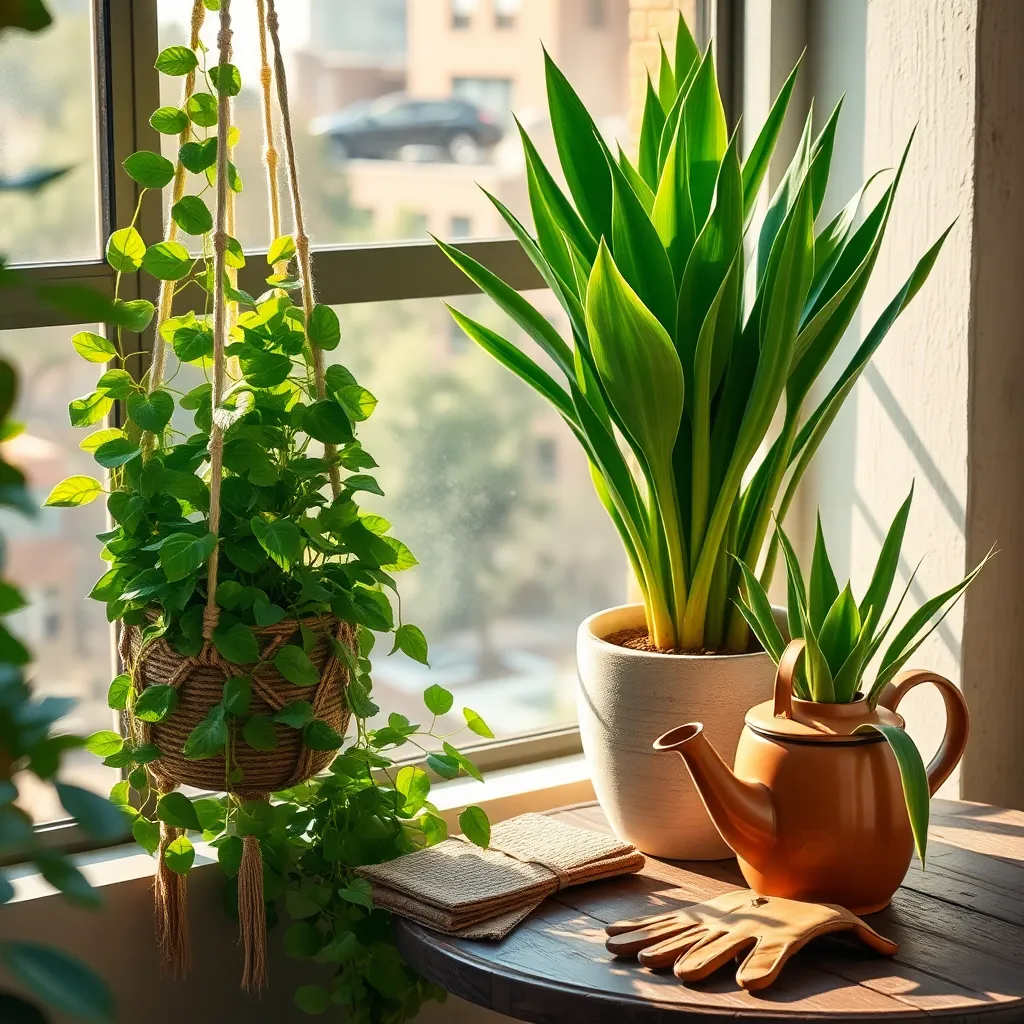
Focusing on plant care, it’s essential to understand the unique needs of your chosen greenery. Regular observation is key; check your plants weekly for signs of distress, such as wilting or yellowing leaves, which could indicate a need for water or nutrients.
Watering is a critical aspect of plant care that can be easily managed, even for busy individuals. Use the finger test to determine soil moisture: insert your finger about an inch into the soil—if it’s dry, it’s time to water.
For those with limited time, consider using a self-watering pot to maintain consistent moisture levels. These pots store water in a reservoir, allowing plants to absorb it as needed, reducing the frequency of manual watering.
Choosing the right soil can make a significant difference in plant health. Opt for a well-draining potting mix for most houseplants to prevent root rot, and consider adding perlite or sand to improve aeration.
Advanced gardeners might experiment with fertilization schedules to optimize growth. A general rule is to fertilize during the growing season—spring and summer—using a balanced, slow-release fertilizer.
Pruning is another effective way to keep plants healthy and thriving. Regularly remove dead or diseased leaves to encourage new growth and maintain the plant’s shape.
Finally, be mindful of pest management without resorting to harsh chemicals. Natural remedies like neem oil or insecticidal soap can effectively control most common pests, providing a safer environment for both plants and people.
Conclusion: Growing Success with These Plants
In nurturing both plants and relationships, the parallels are striking. We’ve explored five key concepts: the importance of choosing the right plant (or partner) that complements your lifestyle, the power of consistent yet manageable care, the resilience found in forgiving oneself for occasional neglect, the joy of watching growth over time, and the necessity of creating an environment where both plants and relationships can thrive. These principles not only simplify plant care but also enrich our interpersonal connections.
As your actionable next step, pick one relationship in your life and apply these principles: identify what makes it thrive, and commit to small, consistent acts of care. By doing so, you’ll likely see growth and flourishing unfold before your eyes.
Remember, nurturing connections—whether with people or plants—is a journey, not a sprint. Bookmark or save this article to revisit these insights whenever you need guidance. By integrating these practices into your daily routine, you’re poised not just for plant success, but for enduring relationship fulfillment. Embrace this journey with the confidence that every step you take brings you closer to the thriving bonds you desire.

